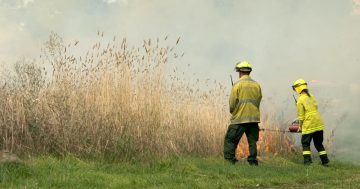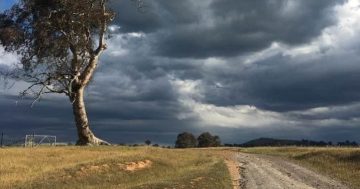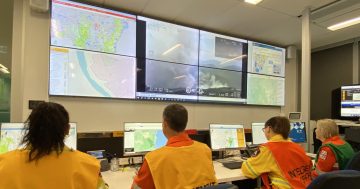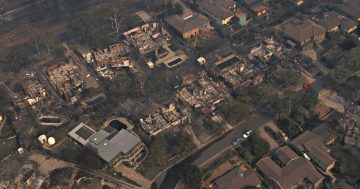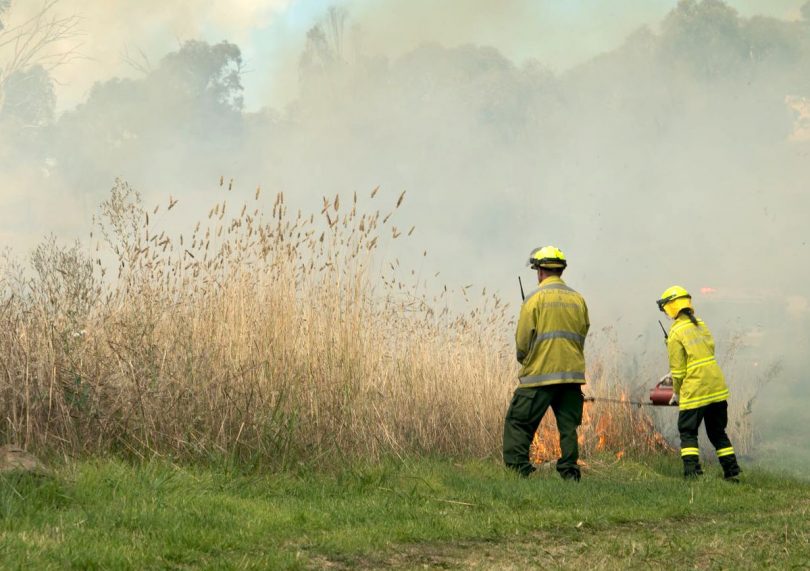
The ACT has been conducting fewer prescribed burns to reduce bushfire risk than in previous years. Photo: ESA.
Government ministers and agency officials have admitted fewer hazard reduction burns have been occurring across Canberra – and climate change appears to be to blame.
They were presented with concerns that all types of hazard reduction burns (such as prescribed and cultural or cool burning) were being conducted on fewer days than previously seen during a public hearing into the ACT environment’s bushfire preparedness.
Environment and Land Management Minister Rebecca Vassarotti said this type of bushfire risk management was becoming more challenging due to climate change.
“We’ve come off the back of a very strange weather pattern over the past few years that has significantly impacted on our ability [to conduct hazard reduction burns]. We’ve had to do things quite differently,” she said.
“It has also changed the risk profile of what we have been dealing with … certainly we’ve been doing less [burns] than we’d like to.
“You’ve got to have the conditions just right and the windows [to do so] have narrowed.”
Soil moisture levels, weather conditions and available personnel and resources are just some of the factors to consider when planning a burn.
Higher than average rainfall has made burns difficult in catchment areas, such as the Namadgi National Park.
ACT Rural Fire Service chief officer Rohan Scott pointed out that all Australian jurisdictions were behind on the number of burns they wanted to complete.
The ACT doesn’t have a targeted area to burn but follows a ‘risk residual model’.
“The weather has not been in our favour for the past four years,” Mr Scott said.
“Where we typically wouldn’t burn [previously], we have been burning – so we’ve been burning in the height of the fire season, which normally we wouldn’t do, which shows the change in the climate as well.”
Research about the changing climate also suggests that times that were previously considered inappropriate for burns are now acceptable.
The Parks and Conservation Service (PCS) works closely with the Emergency Services Agency (ESA) to manage fire risk. The ESA mainly manages grasslands, while the PCS focuses on forested areas.
Fire and Emergency Services Minister Mick Gentleman pointed out the agencies had also been looking at other hazard reduction methods beyond burning to manage fuel loads.
“There’s much more strategic grazing than ever before, much more slashing … using rural colleagues as well to ensure we can keep fuel loads down,” he said.
Concerns around track maintenance were also raised in previous hearings.
Former PCS Fire Forest and Roads senior director Neil Cooper had raised concerns there had been a decreasing capability in the unit and that the focus on track management had “gone downhill”.
He raised specific concerns about the main access for the northern part of Namadgi National Park, which had been closed in early February for safety reasons.
“One [issue] is a lack of skilled people who know about forest fire-trail maintenance. You cannot grab a contractor doing the Northbourne flats and say, ‘Go up and fix a road in Namadgi’,” Mr Cooper said.
“You have to go through ESOs (Environmental Significance Opinions) to effectively upgrade a road that has been there forever. It defies logic to me, and that is a real impediment to getting things done.”
In his submission, Mr Cooper also voiced concerns that road trail maintenance had reverted to how it was before the 2003 fires, that “history seems to be repeating itself”.
“Many of the tracks and trails remain inaccessible and overgrown, and the focus on an effective trail network has decreased to an alarmingly low level,” he submitted.
“With climate change and expected weather patterns that will produce fire behaviour that we have possibly not expected in the past, it is not the time to fall behind in this critical aspect of fire management.
“Everyone knows that a fast, effective initial attack on any ignition is essential to ultimate success and that to do this, there is an absolute requirement for good access.”
Ms Vassarotti said fires didn’t just impact trail management work but also floods and the raised water table, but stressed additional work was underway to examine how PCS manages fire trails.
Included in this work is the ACT’s first audit of its road drainage assets, with more than 5000 culverts and engineered crossings already examined and about 1700 to go.
“[We’re looking] at the trails to understand what we’ve got, how we’re using them and how they’re being maintained,” Ms Vassarotti said.
The audit of road drainage assets is currently underway.












